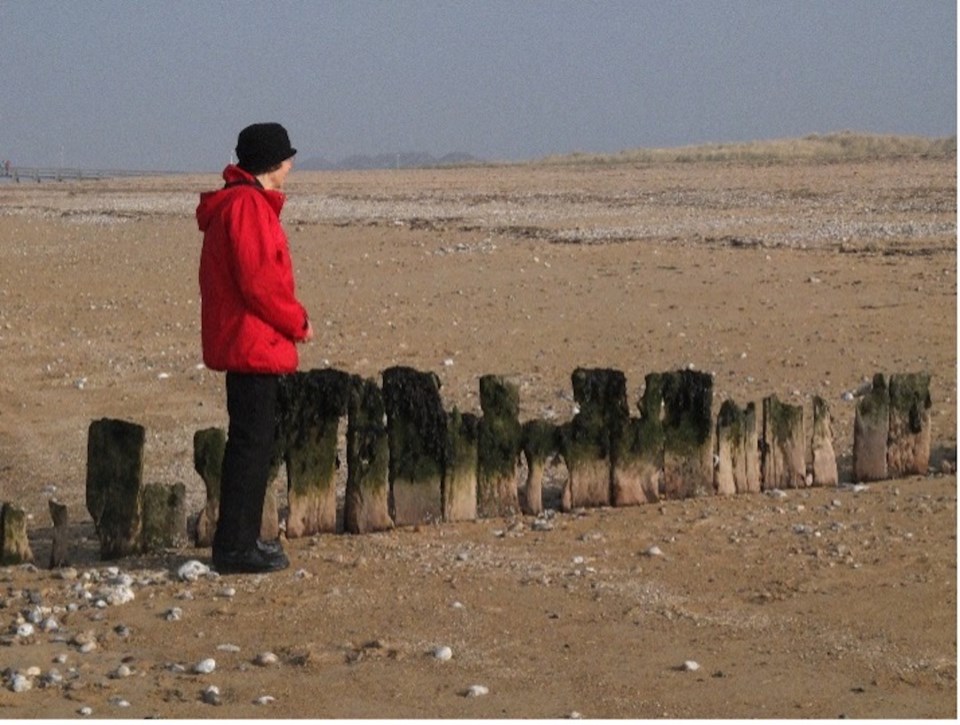At her home in Gibsons, Pam Proctor is thinking about her father Frank, who 80 years ago on June 6, 1944 landed on a beach at Courseulles-Sur-Mer. He later wrote about his survival in the following eleven months of fighting in his book I Was There, which she had published in 2000.
As Quartermaster Sergeant of the Regina Rifles, he was briefed on May 30 and assembled his trucks to join a convoy that raced in the night through the streets of London to embark on an American landing ship at Tilbury Docks. They were soon on their way down the River Thames and out on the English Channel. Frank describes the next days as being fairly quiet, until the weather turned nasty with many suffering from sea sickness and the landings delayed by a day.
He recalls that at 7:35 a.m. the landings began in his sector called Nan Green Beach at Courseulles-Sur-Mer and the roar of battle was deafening. There was whistling of huge deadly shells passing overhead and the awesome fire of both the attackers and defenders. Each landing craft contained 30 men and he saw two blown up amid tangled coils of wire and floating mines. Once ashore, silencing of enemy guns was the first priority and the fierceness of these encounters was beyond description. Then his waterproofed supply trucks could drive off the landing ship through four feet of water and get under cover in any low spot with the men digging trenches to get below ground for protection against enemy shelling and strafing by low flying aircraft.
Then, Frank tells about assessing their losses of up to 70 per cent of their weapons and working all night to repair and prepare for an enemy counter attack. When it came, the Reginas fought all the next night and succeeded in holding their position. Then the dead were laid out on the grass, some 25 lads who Frank knew very well. He continues with the violent and tragic day by day battle toward the city of Caen that resulted in the liberation of a levelled city. He marvelled at the jubilation about their freedom by those citizens who survived, and thought of his loving wife and children in Canada.
Seventy years later, Pam and I travelled to Courseulles-Sur-Mer to walk on that beach and visit the Juno Beach Centre where Frank’s name is inscribed with hundreds of others. Many names are followed by KIA, killed in action. After D-Day, Frank continued with the Regina Rifles through France and Belgium to the liberation of Holland in May 1945. His book concludes with, “my experience in the Regina Rifles taught me the price of freedom.”



